Quite a few reunions are expected to happen in the 2022/23 Serie A season, with Romelu Lukaku returning to Internazionale on loan, Paul Pogba possibly going back to Juventus and Nemanja Matić joining José Mourinho at Roma. While Lukaku and Pogba’s returns are actively discussed and the expectations on them are high, nobody is talking about how Matić could influence Roma’s performance and fit into Mourinho’s tactics.
While the Serbian has been lacking consistency over the last few years, he became an essential part of the struggling Manchester United team and was among the regular starters despite the changing circumstances.
On the other hand, Mourinho had a successful first season in charge of the Giallorossi, leading them to their first title in 14 years after winning the UEFA Europa Conference League in its first year of existence.
Roma are actively linked to a few players in the summer transfer window, with the manager trying to fill in the gaps and be prepared for an eventual Nicolò Zaniolo departure.
Meanwhile, the club landed Matić with a free transfer, and his former manager would be hoping for him to fit their style of play and help them with his experience.
In our scout report, we examine how the Serbian could fit the team’s tactics through tactical analysis and explain what are his strengths and weaknesses that should be considered.
How can he influence the team in possession?
Certainly, the Serbian will be most beneficial for the team with his experience as he is expected to bring balance to Roma’s considerably young midfield. He can support the team through his composure in all phases of the game.
He is comfortable with the ball and can give them more security in their build-up, providing the full-backs/wing-backs with more freedom to move forward and also allowing his teammates in midfield to move into more advanced positions. His passing abilities provide options in midfield whether it is for retaining possession and moving the ball laterally or progressing it to the final third.
His positioning would help Mourinho’s side to have a better connection between midfield and attack. He is used to playing in a 4-2-3-1, especially under the Portuguese, so he is expected to quickly adjust to that set-up should the manager decide to stick to it.
However, at some point of the season, Mourinho adopted a back-three formation at Roma, which might change Matić’s role slightly. This doesn’t necessarily mean he would have difficulties fitting but might even result in underlining his strengths as it gives the team more options with the ball and better coverage defensively.
Despite the attacking advantages the back three formation offers, Mourinho doesn’t risk too much by placing his team too high up the pitch. That’s why the 33-year-old’s long passing could be very beneficial for delivering the ball to the attacking players and breaking through defences. He has an eye for a quality pass and can successfully identify his teammates’ movement off the ball so he can progress it further.
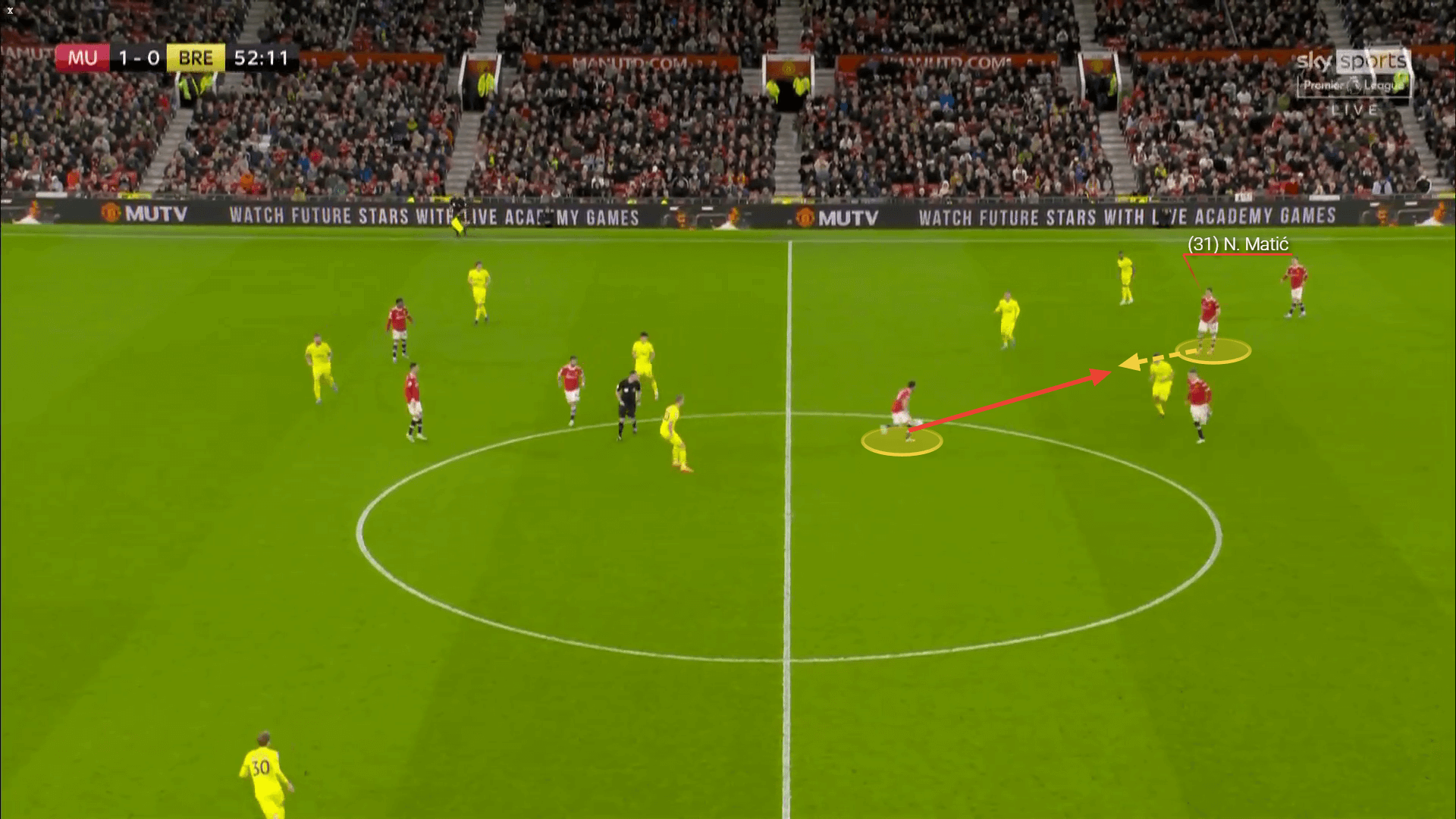
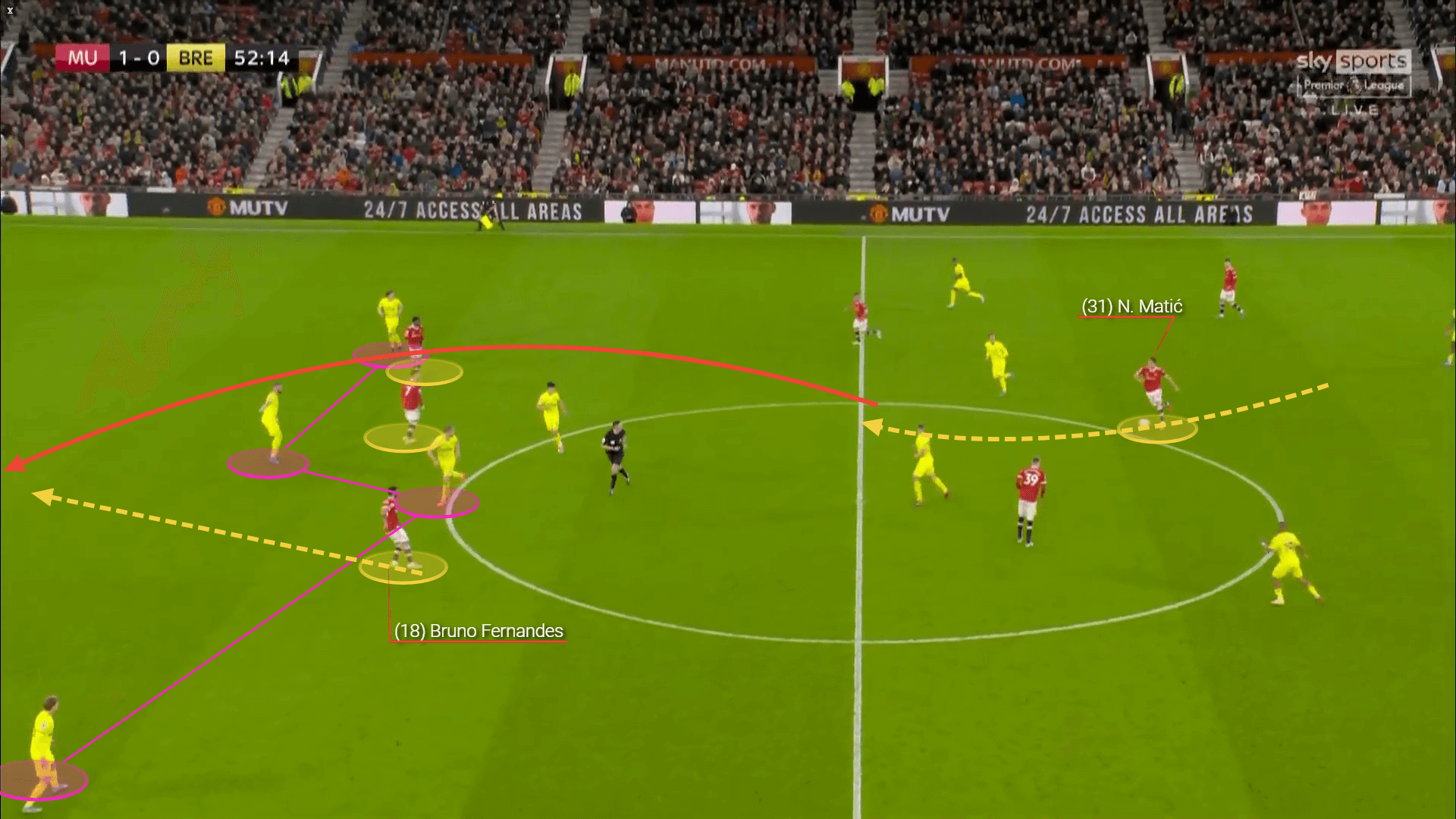
His spatial awareness allows him to find gaps and set his teammates up in quality positions, which could be a great addition to Tammy Abraham’s movement.
With his defensive awareness, providing balls over the top and having the ability to switch play, he could fit perfectly into Roma’s counter-attacking style of play and could increase their efficiency even more, as more of their counter-attacks can result in shots.
He averaged 2.1 progressive runs last season, which can help the Giallorossi to get the ball out of the defence and quickly make an offensive transition, while his passing could target the best-positioned attacker so the team could finish the counter-attacks successfully.
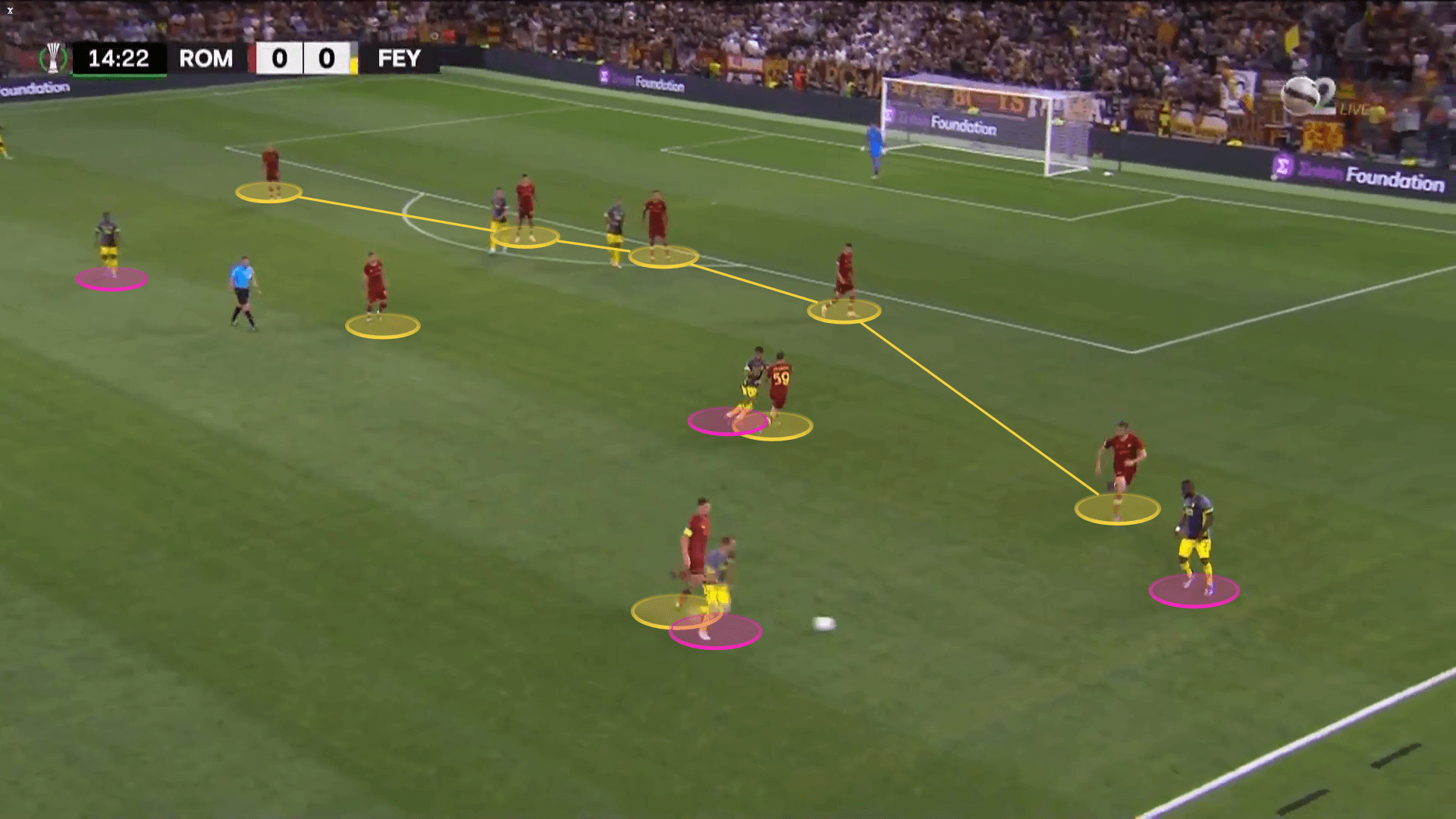
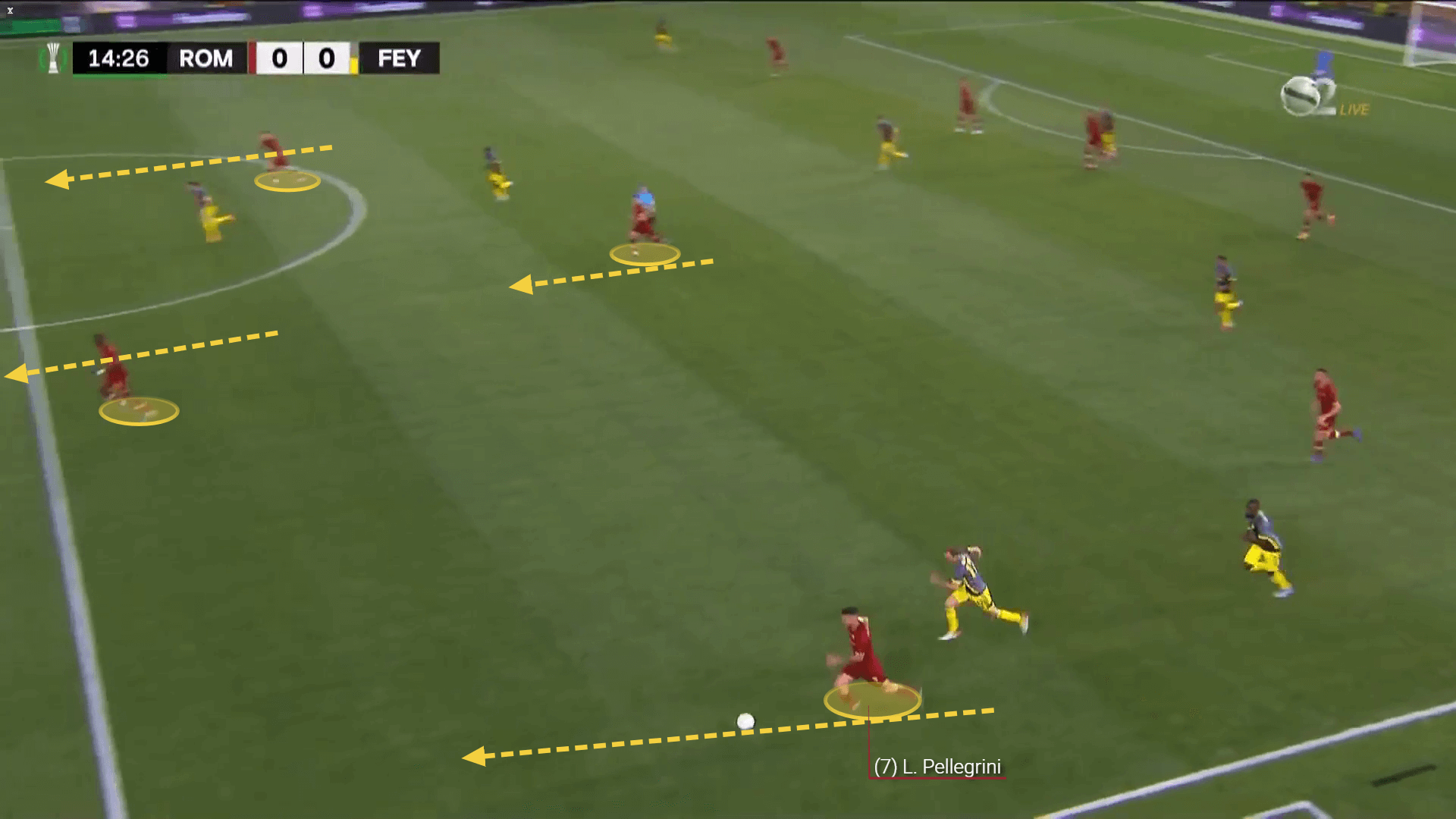
His impact out of possession
By switching between 3-4-1-2 and 3-5-2, the coach didn’t mean to get the focus out of the defence by any means. While Roma would occasionally involve in high pressing, the team would still stay considerably low as a unit as he wants the players to be able to maintain their positions but also to be able to re-organise and focus on recovering the ball and counteracting.
Matić’s positioning can support their actions out of possession as his anticipation skills allow him to move into quality positions and help in blocking the lanes and stopping opposition attacks. The Serbian doesn’t hesitate to dive into direct challenges, but he also frequently uses his positioning to pressurise the opposing players.
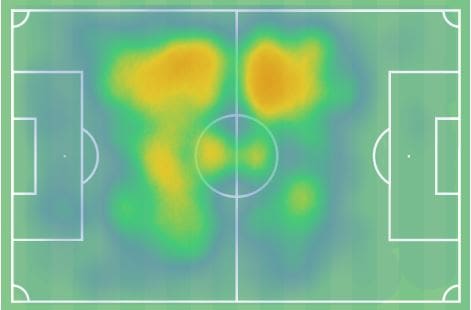
He always scans his teammates so he’s aware of the backline’s position and would look to cover depth and support their movement should any of the defenders are caught out of position. As his heatmap indicates he often drops deeper in efforts not only to provide a passing option in possession but also to provide better coverage of the half-spaces where the defenders might need more help.
He averaged 5.2 interceptions per 90 in his last season with United, which underlines his ability to anticipate the opposition’s actions and his aim to gain back possession. His 9.35 recoveries per game are also crucial defensively and could help Roma in increasing the frequency of their counter-attacking actions.
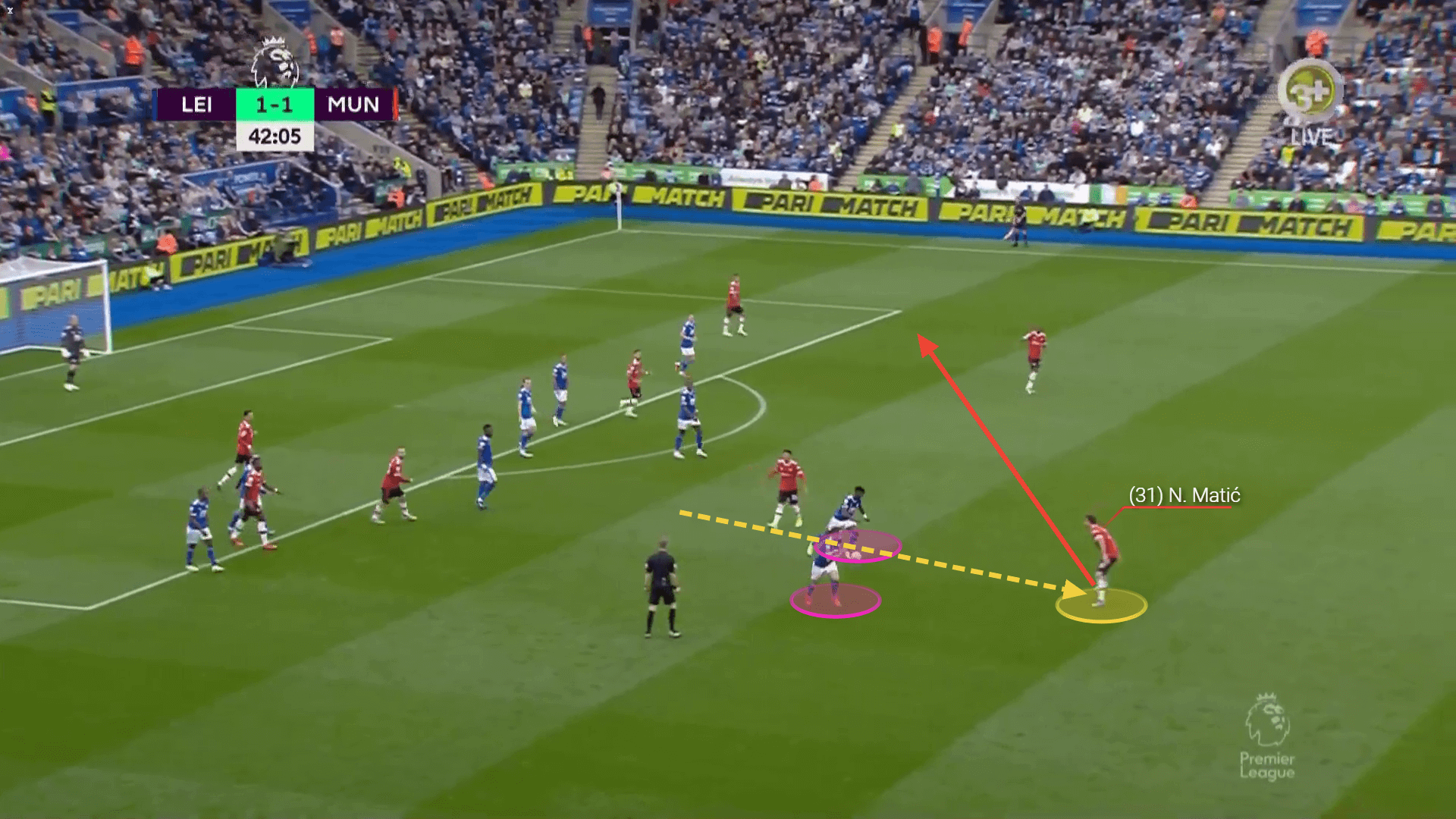
Can he add something more?
We can see that Matić can fit well into Roma’s current set-up, but can he initiate a tactical change as well? Having him in the squad might lead to Mourinho changing his strategy in possession a bit. While he will still rely on the team’s counter-attacking actions to create goalscoring opportunities, he might use the Serbian as the link between the lines and instruct the team to start building up from the back more frequently with more advanced players when in possession.
That’s because the 33-year-old could position well in midfield and drop successfully to pick up the ball without exposing the defence, while his teammates could move towards the central line and try to create overloads in attack. This might increase the cross frequency per game as well, meaning they would have more chances in front of the goal.
His presence in midfield and his passing can also allow the team more time on the ball and increase their efficiency in possession. Through his composure and decision-making he can help in bypassing press, hence not only increasing their possession rate but also allowing his teammates more time to move into advanced positions. He is the player with the most forward passes per 90 among the currently available options in midfield. While he can play laterally too, his constant aim is to find pockets in the opposition half and set his teammates up. Only Carles Pérez has better numbers in terms of progressive runs per 90 and impact on the build-up.
Conclusion
Matić has proved his qualities under Mourinho on multiple occasions and it is no wonder why the Roma manager wants to use his experience to bring balance to the squad and have a leading figure in all phases of the game. As our analysis showed, the Serbian could be beneficial in possession through his composure, passing and spatial awareness, while his defensive actions can offer more stability off the ball and better chances for the team to demonstrate their counter-attacking proficiency.





Comments